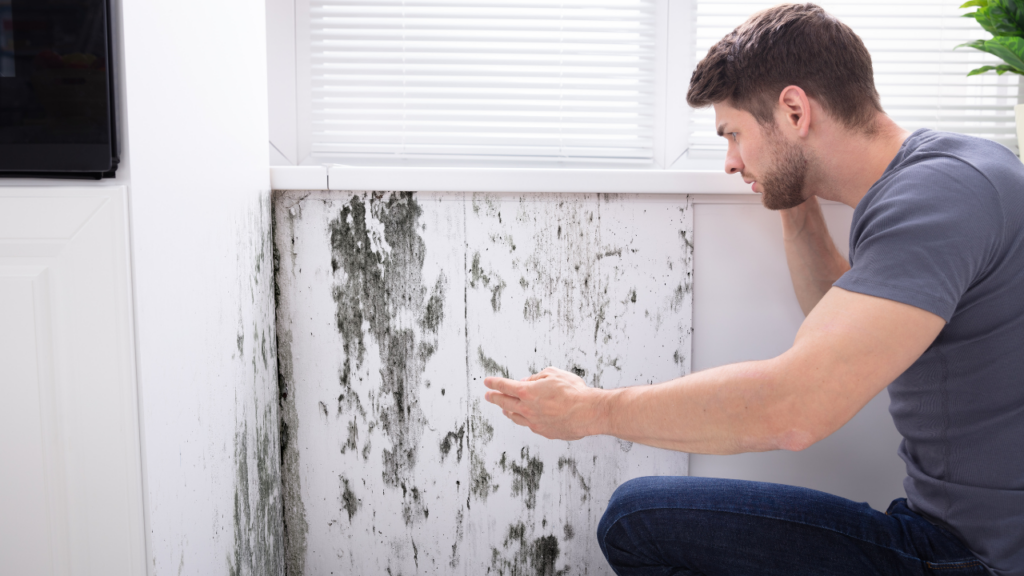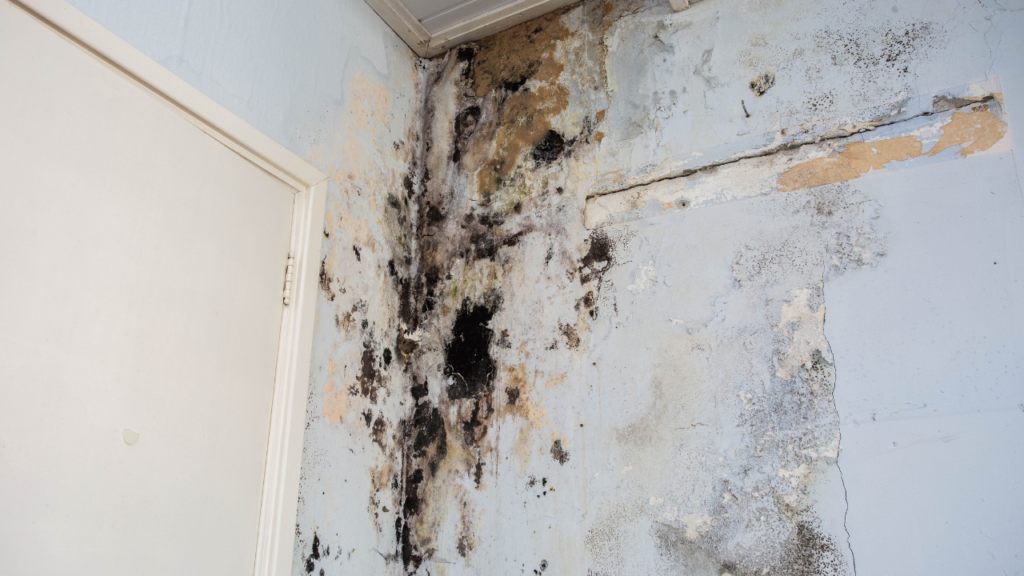
Mold is not just an eyesore. It’s a serious problem that can affect your health and safety. But because of mold in apartments, houses, and other living spaces. Finding mold in a home is often an instant turnoff, and for good reason. According to the Centers for Disease Control and Prevention, mold can cause different health effects.
This includes skin rash, coughing, wheezing, burning eyes, and sore throat. As a homeowner, you might wonder if you can sell a house with mold. Yes. This blog post will guide you on how sellers should sell property with mold.
Can You Sell a House with Mold?
If you’ve noticed signs of mold in your house, such as damp or peeling wallpaper, dark spots on your walls and ceiling, molding damage, or musty or foul odors in your heating system, you can still sell your home. If you can’t deal with the mold before you sell, you should disclose the mold to potential buyers.
If you can take care of the mold before you sell your home, you’ll likely have more luck finding a buyer. However, there are plenty of situations where dealing with mold problems first isn’t an option.
Assessing and treating mold in your home can get expensive fast. It also can take time to find all the mold and remove it completely. If you need to sell a house quickly or don’t think you can afford the repairs your home needs, you’ll need to sell your house with mold.
What is Mold, and What are its Types?

Mold is a type of fungus that can grow indoors and outdoors. It thrives in damp, warm, and humid environments. Mold reproduces by releasing tiny spores into the air, which can then settle on surfaces and grow into new colonies. Several types of mold can be found in homes. Here are a few common ones:
Cladosporium: This is a widespread type of mold that can appear on surfaces like carpets, fabrics, and wooden materials. It usually is black or olive-green in color.
Aspergillus: Aspergillus mold can be found in areas with high moisture levels, such as bathrooms and kitchens. It can have various colors, including green, yellow, and brown. Some types of Aspergillus can produce mycotoxins, which can be harmful if inhaled or ingested.
Stachybotrys: Also known as “black mold,” Stachybotrys is a dark green or black mold that thrives in extremely damp or water damaged areas. It is less common than other types of mold but can cause health issues if exposed to high concentrations.
Penicillium: Penicillium mold is often found on wallpaper, insulation, and carpeting. It can have a blue or green appearance. Some species of Penicillium are used to produce antibiotics, while others may trigger allergies or respiratory problems.
Alternaria: Alternaria mold is commonly found in damp areas like bathrooms and basements. It has a velvety texture and can be either dark green or brownish in color. Exposure to Alternaria may trigger allergic reactions in some individuals.
Common sources of mold problems
Mold can be found just about anywhere, as long as there’s water and oxygen. We know oxygen is everywhere in a house, but where do you often find water?
The answer could also be anywhere, especially if molding is a concern, though you have some areas that are more prone to mold than others.
Roof
A wet roof can lead to moss and mold if left unattended. Your roof is there to protect the rest of your house, but any growth on the roof from moss or algae can allow mold to grow and get inside the home.
Attic
If your roof leaks, you’ll get water in your attic. If the moisture stays, mold is going to start growing. Look for wet spots around the attic to see where there might be mold growth.
Plumbing
Pipes can and most likely will eventually leak. These leaks can occur throughout the house, including within walls or ceilings. If pipes are hidden, the best way to find a leak and potential mold growth is by looking for water spots. Remember, it can get expensive (up to $15,000 or more) to re-plumb a house.
Crawl space
Moisture can build up in confined spaces, especially if the space is near a moisture-bearing source, such as dirt or soil. You might only think about it or visit this area of the house a little, but your crawl space is often the perfect place for mold to grow.
Basement
A leaky basement could be problematic for sellers and buyers because of water damage and mold. Like a crawl space, your basement can also allow moisture to build up and be an area where mold can grow. In addition, basements could have molding issues and leaky pipes, which also increase the risk of mold.
Bathroom
The bathroom is typically a small, enclosed space where you have plenty of moisture. Hot showers fill the room with water; sometimes, the moisture never leaves. Bathroom fans can help remove moisture, but they’re not always 100% effective.
Tips for selling a house with mold damage

Selling a house with mold damage can be a challenging task, but with the right approach, it is possible to navigate the process successfully. Here are seven tips to help you sell a house with mold damage:
Address the Mold Issue
Before putting your house on the market, it’s essential to address the mold problem. Hire a professional mold remediation specialist to assess the extent of the damage and develop a remediation plan.
Taking care of the mold issue demonstrates to potential buyers that you are proactive and responsible.
Obtain Certification
After the mold remediation is complete, consider obtaining a mold remediation certification. This certification serves as documentation that the mold issue has been properly addressed and can provide reassurance to potential buyers.
Disclose the Mold Problem
It’s crucial to be transparent and disclose the mold damage to potential buyers. Please disclose this information to avoid future legal issues.
Provide full disclosure in writing, including details about the mold problem, the remediation process, and any certifications obtained. Honesty is key to maintaining trust with potential buyers.
Price the House Realistically
When determining the selling price, consider the presence of mold damage. Buyers will likely consider the cost of remediation when making an offer.
Set a realistic and fair price that reflects the condition of the house, allowing room for negotiation.
Highlight the Positive Features
While it’s important to disclose the mold damage, also emphasize the positive aspects of the house. Showcase the property’s unique features, recent renovations, or desirable location.
By highlighting the house’s strengths, you can attract potential buyers who may be willing to invest in the necessary remediation work.
Provide Documentation
Gather all relevant documentation related to the mold issue, including the mold inspection reports, remediation plan, and any certifications obtained.
Having these documents readily available shows potential buyers that you have taken the necessary steps to address the problem professionally.
Work with an Experienced Real Estate Agent
Collaborate with a real estate agent with experience selling a house with mold damage. An agent familiar with these situations can guide you through the process, provide valuable advice, and help you navigate any challenges that may arise.
What are the options for selling a mold-infected house?

Sell Your House “As Is”
When faced with mold damage in your house, one option is to sell it “as is.” This means you sell the property without repairing or addressing the mold issue.
Here are some key points to consider:
Pricing Considerations: Selling a house as-is typically means pricing it below market value. Potential buyers will factor in the cost of mold remediation when making an offer. Consult with a real estate agent or appraiser to determine your property’s fair and competitive price.
Disclose Mold Damage: Even when selling “as is,” it’s crucial to disclose the mold damage to potential buyers. Honesty and transparency are essential to build trust and avoid legal issues. Provide written documentation about the mold issue, including inspection reports and any remediation efforts you’ve undertaken.
Target Investors or Flippers: Selling “as is” may attract investors or flippers who specialize in purchasing properties with repair needs. They are familiar with handling mold-related issues and are more likely to consider buying a house in this condition. Work with a real estate agent who is experienced in working with investors to market your property effectively.
Limited Financing Options: Keep in mind that selling “as is” may limit the financing options available to potential buyers. Many traditional lenders may require a mold-free property to approve a mortgage. Buyers relying on financing may be more challenging, so be prepared for offers from cash buyers or those using non-traditional lending sources.
For Sale By Owner (FSBO)
Another option for selling a house with mold damage is the For Sale By Owner (FSBO) route. Here’s what you should know:
Complete Research and Preparation
As an FSBO seller, you must educate yourself about the local real estate market, pricing trends, and legal requirements for selling a mold-damaged property.
Prepare all the necessary documents, including disclosure forms and inspection reports, to provide to potential buyers.
Marketing and Exposure
Develop a comprehensive marketing strategy to ensure maximum exposure for your property. Utilize online listings, social media platforms, local classifieds, and traditional marketing methods to reach potential buyers.
Consider hiring a professional photographer to showcase the property in its best light.
Seek Professional Guidance
While you’re selling the house independently, seeking professional guidance when needed is still advisable.
Consult with a real estate attorney or agent to review contracts, provide legal advice, and ensure compliance with local regulations throughout the selling process.
Negotiation and Closing
Be prepared to negotiate with potential buyers regarding the mold issue and pricing. Buyers may request a lower price or ask for allowances for mold remediation costs.
Once you have agreed on terms, ensure all necessary documents are prepared and the closing process is handled properly.
Final Thoughts
Selling a house with mold damage in Virginia Beach may present challenges, but it is not impossible. You can navigate the selling process successfully by addressing the mold issue, obtaining necessary certifications, transparently disclosing the problem to potential buyers, and working with experienced professionals. Whether you sell your house “as is” or opt for the For Sale By Owner (FSBO) approach, it’s crucial to price the property realistically, highlight its positive features, and provide relevant documentation.
At HR Property Doctor, we buy houses and look forward to working with you. Whether you have mold damage to a house, have only suffered minor losses, or are somewhere between these two extremes, selling your house to us for cash is an excellent option that helps take the burden off you – after the mold damage. We will buy your mold-damaged house in Virginia Beach without hassling you to make a single repair. Contact HR Property Doctor today if you’d like a fair, no-obligation deal on your home with mold damage or any other issues.

